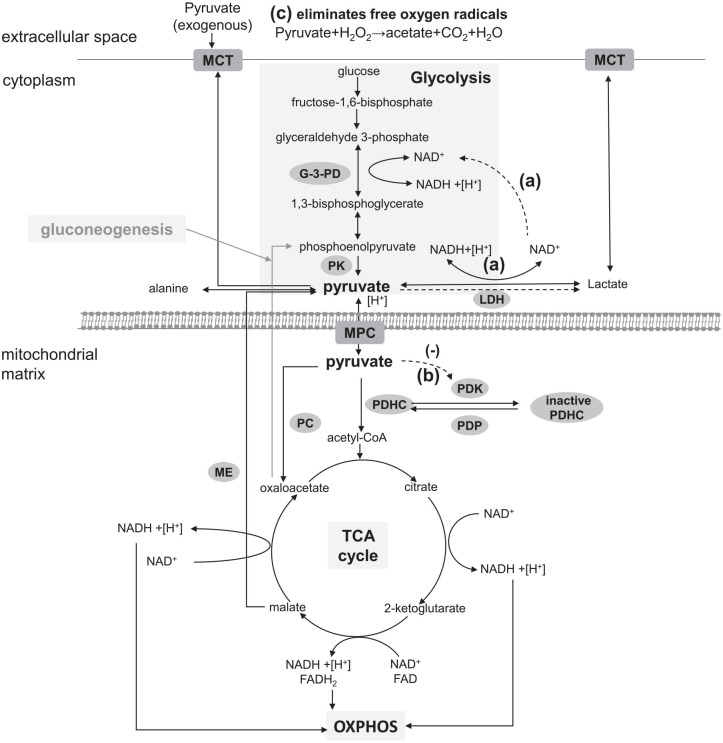Figure 1.
Pyruvate metabolic pathways and the potential mechanism for treating mitochondrial diseases: pyruvate is derived from glycolysis, amino acids (such as alanine, cysteine, serine, and glycine), malate, and lactate under different situations. In the cytoplasm, pyruvate can be transformed into alanine, metabolized to lactate and NAD+ by LDH, and excreted from the cell via MCT. Pyruvate can also enter into the mitochondria via MPC and convert to acetyl-CoA by PDHC. Subsequently, acetyl-CoA can combine with oxaloacetate to form citrate and begin the TCA cycle to yield ATP, NADH and FADH2, and the latter two molecules can transfer their energy to the electron transport chain. In other situations, pyruvate may be consumed by PC to generate oxaloacetate for gluconeogenesis. Dashed lines are used for the potential mechanism for treating mitochondrial diseases as figure shows: (a) Glycolysis activation: exogenous pyruvate was reduced by LDH to provide NAD+ for glycolysis; (b) PDHC activation: pyruvate inhibits PDK to activate PDHC for generation of acetyl-CoA; (c) eliminates free oxygen radicals by a non-enzymatic reaction.
G-3-PD, glyceraldehyde 3-phosphate dehydrogenase; LDH, lactate dehydrogenase; MCT, monocarboxylate transporter; MPC, mitochondrial pyruvate carrier; OXPHOS, oxidative phosphorylation; PC, pyruvate carboxylase; PDHC, pyruvate dehydrogenase complex; PDK, pyruvate dehydrogenase kinase; TCA, tricarboxylic acid.

